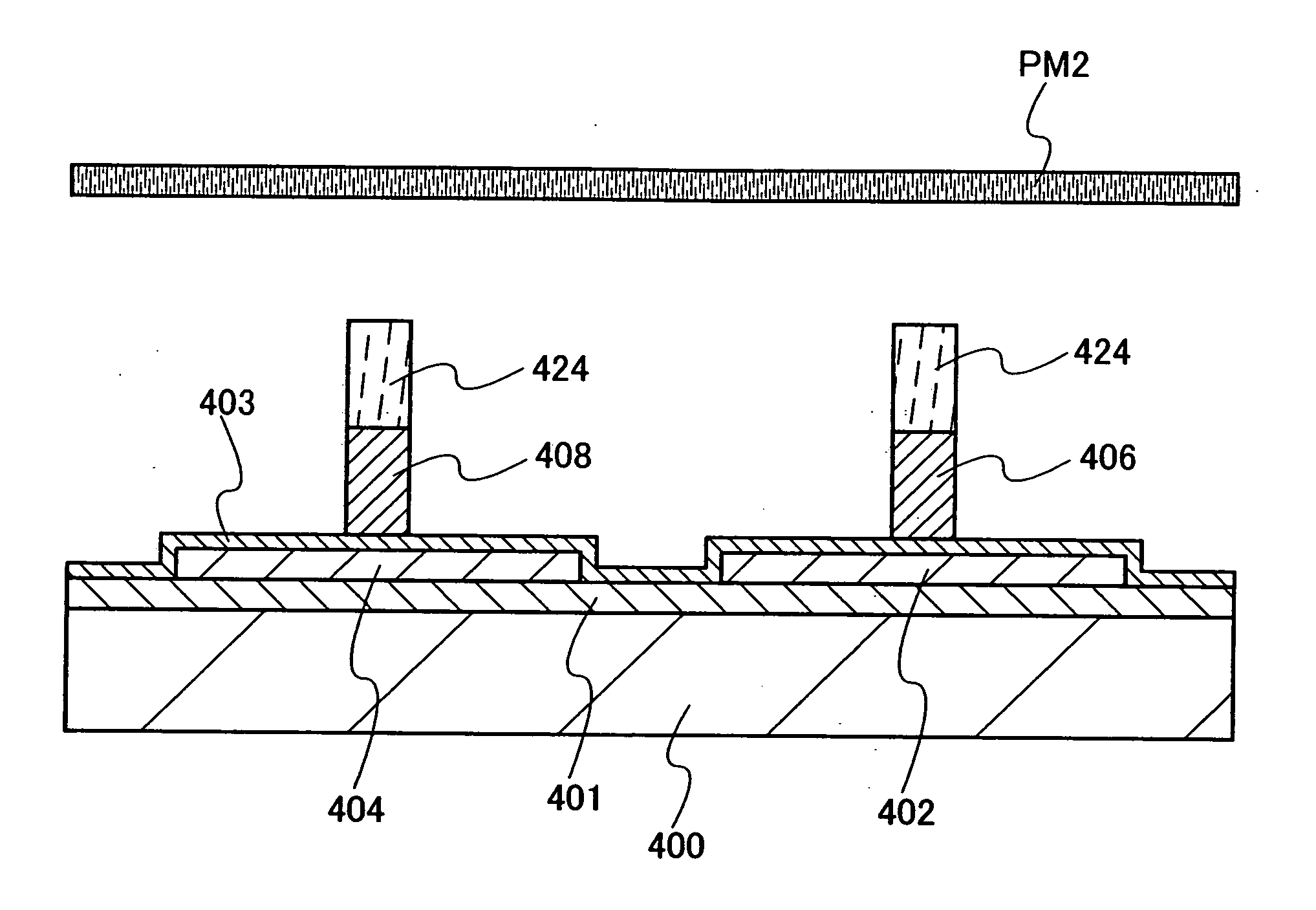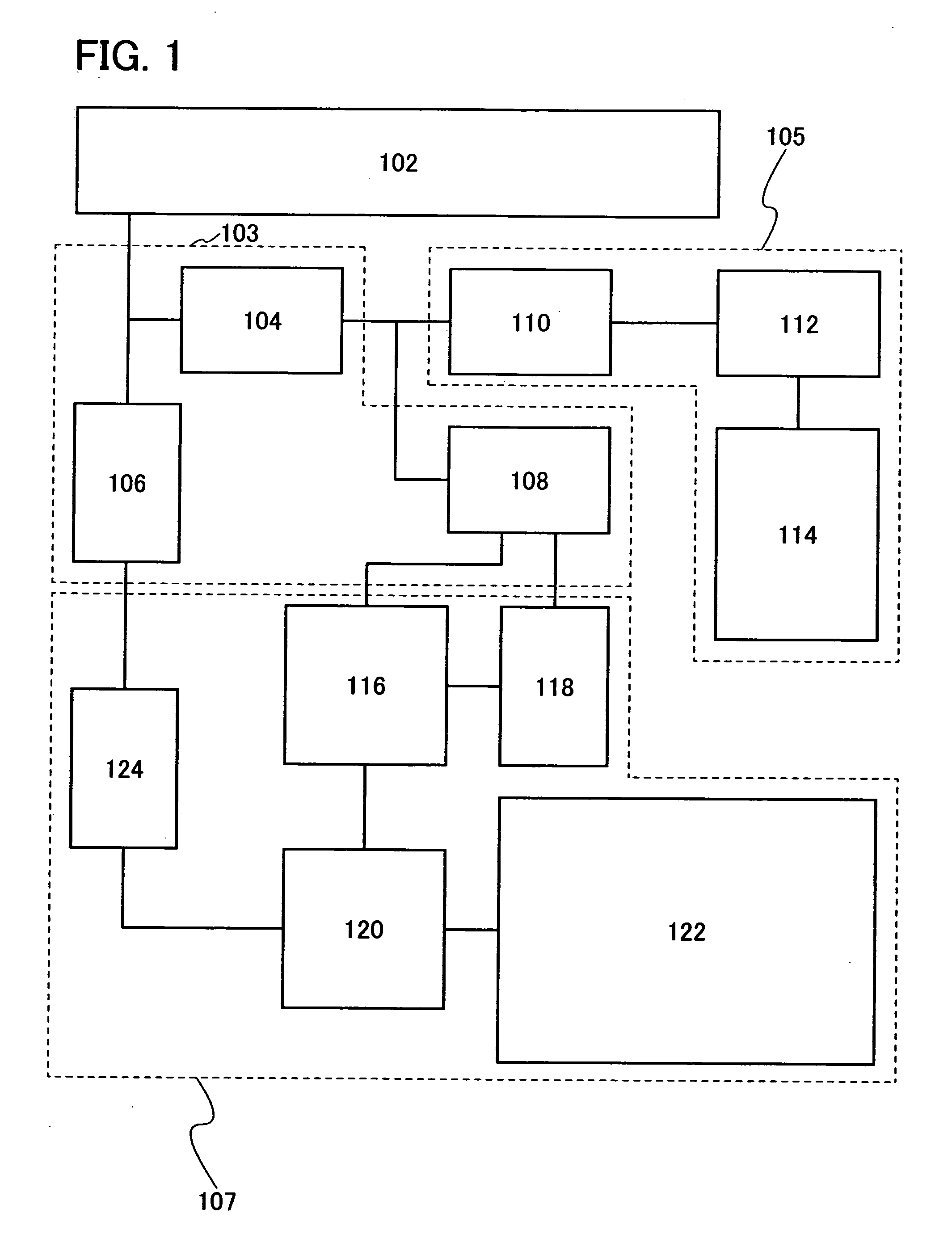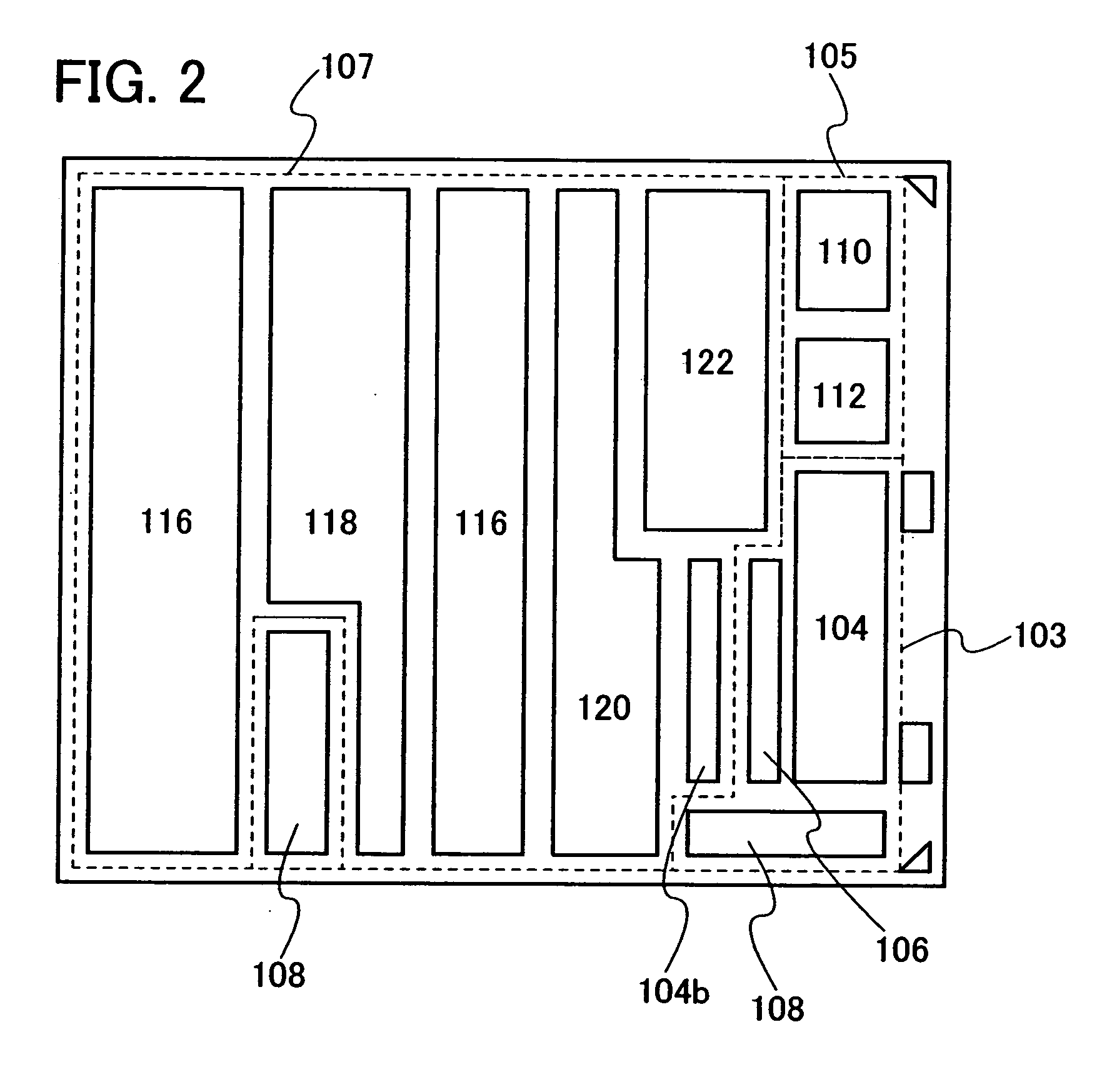Manufacturing method of semiconductor device
a manufacturing method and semiconductor technology, applied in the field of manufacturing methods of semiconductor devices, can solve the problems of difficult formation of micropatterns through lithography process, and achieve the effects of reducing the distance between adjacent gates (gate pitch), significantly improving the degree of integration of the integrated circuit, and improving the degree of integration
- Summary
- Abstract
- Description
- Claims
- Application Information
AI Technical Summary
Benefits of technology
Problems solved by technology
Method used
Image
Examples
embodiment mode 1
[0072] A manufacturing method of a semiconductor device using the above-described lithography technique which is capable of micropattern formation is described with reference to the drawings. In the following description, a static random access memory (SRAM) having six transistors is illustrated as an example of a memory cell.
[0073] Inputs of inverters 301 and 302 in this SRAM are connected to bit lines BL1 and BL2 through switches S1 and S2, respectively. The switches S1 and S2 are controlled by a row selection signal which is delivered through a word line WL. Each of the inverters 301 and 302 is supplied with power from a high voltage VDD and a low voltage GND which is generally grounded. In order to write data into the memory cell, the voltage VDD is applied to one of the bit lines BL1 and BL2, while the voltage GND is applied to the other of the bit lines BL1 and BL2.
[0074] The inverter 301 includes an n-channel transistor N1 and a p-channel transistor P1 which are connected i...
embodiment mode 2
[0094]FIG. 11 shows another example of a circuit layout of the SRAM shown in FIG. 5. FIG. 11 shows an SRAM having a semiconductor layer, a gate electrode layer, and three wiring layers. The SRAM includes semiconductor layers 501 and 502 for forming n-channel transistors, and semiconductor layers 503 and 504 for forming p-channel transistors. Further, gate electrode layers 505, 506, 507, and 508 functioning as gate wiring layers are provided over the semiconductor layers 501, 502, 503, and 504 with an insulating layer interposed therebetween. Thus, the n-channel transistors N1 and N2, the p-channel transistors P1 and P2, and the switches S1 and S2 are formed.
[0095] First wiring layers 510, 512, 514, 516, 518, 520, 522, 524, 526, and 528 which contact the gate electrode layers are provided over a first interlayer insulating layer. Second wiring layers 532 and 536 for forming bit lines and second wiring layers 530 and 538 for forming ground potential lines are provided over a second i...
embodiment mode 3
[0108] Instead of performing the phase-shift lithography illustrated in Embodiment Modes 1 and 2, holographic lithography can be performed. By using holographic lithography for formation of gate electrodes and / or contact holes, miniaturization of transistors can be achieved as well as a gate pitch (intervals between contact holes) can be narrowed.
[0109] In that case, it is possible to use a holographic lithography technique for formation of gate electrodes and use a lithography process with a phase-shift mask for formation of contact holes. While the holographic lithography can form micropatterns, it involves a large number of masks and high cost. The same can be said for a computer-generated hologram mask. On the other hand, by combining the holographic lithography technique with the lithography process using the phase-shift mask, it becomes possible to minimize the increase of mask cost and decrease of throughput. Therefore, formation of micropatterns and high productivity can be...
PUM
 Login to View More
Login to View More Abstract
Description
Claims
Application Information
 Login to View More
Login to View More - R&D
- Intellectual Property
- Life Sciences
- Materials
- Tech Scout
- Unparalleled Data Quality
- Higher Quality Content
- 60% Fewer Hallucinations
Browse by: Latest US Patents, China's latest patents, Technical Efficacy Thesaurus, Application Domain, Technology Topic, Popular Technical Reports.
© 2025 PatSnap. All rights reserved.Legal|Privacy policy|Modern Slavery Act Transparency Statement|Sitemap|About US| Contact US: help@patsnap.com



